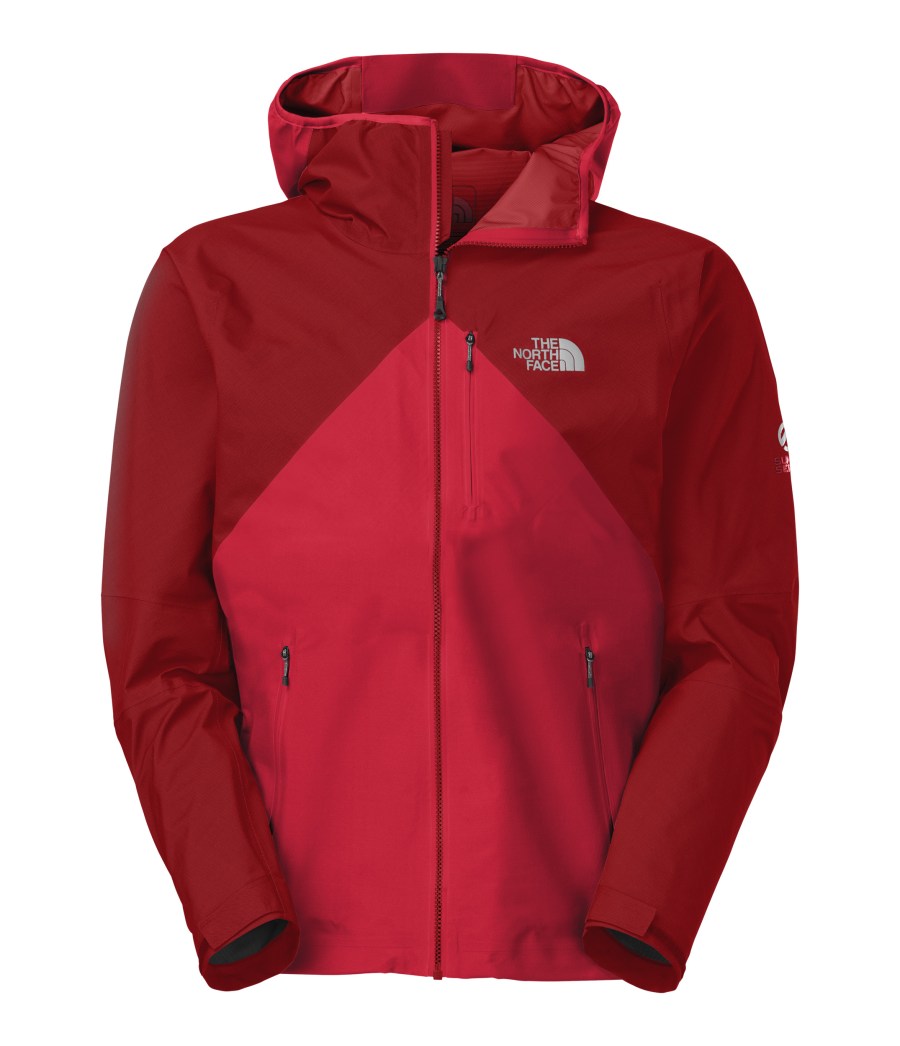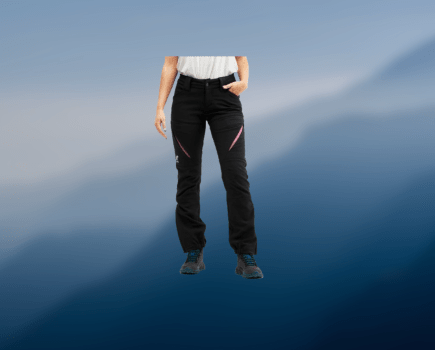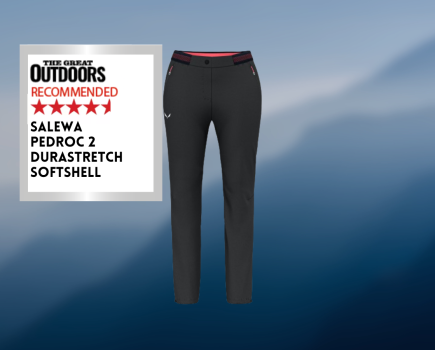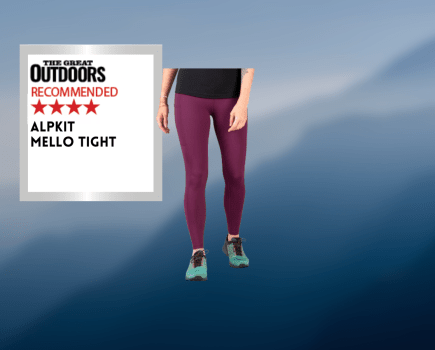It was the The North Face that attracted my attention at the ISPO outdoor trade show earlier this year with its FuseForm manufacturing process.
Briefly, it allows for two different weights of material to be woven together into a single fabric. It’s a very innovative process and one that could have significant influences across outdoor gear. The advantages are obvious: seams are a weak point in any garment or tent, and they also add weight – it’s not just the overlapping material, but also they need to be taped. The FuseForm goes some way in eliminating these seams.
The first jacket, released in autumn this year, is the Fuse Uno, is made from one piece of fabric. The boffins at The North Face have used some impressive origami to fold it from one piece – it took years apparently. The result is a very lightweight Alpine jacket. It only weighs 337g – pretty light for a full alpine shell – but not ‘ultralight’.
It is made from a three-layer HyVent Alpha that adds Cordura roughly half way through the run for one jacket. It’s then folded into a jacket. This does mean there are some seams of course, but significantly less than a normal jacket – 40 percent less according to The North Face. The upper part of the jacket, shoulders and sleeves is made from a 40-denier yarn mixed with Cordura, and the lower section just a 40-denier yarn.
So far, so impressive, but what about the jacket itself? The taping on the seams looks immaculate – one of the tidiest I’ve seen. The fit for me, I’m a large, is one of the best I’ve come across, making the nifty folding all the more impressive. There’s no bulging around the midriff, especially important for climbers, and minimal hem lift.
The main, bulky zip comes up just above the chin, but isn’t constricting. However, there’s no baffle, which was a weak point. I tested this jacket throughout a foul weekend in Snowdonia and there was ingress through the zip after a few hours in horizontal rain and 40ph winds. Otherwise the fabric worked brilliantly – it’s pretty breathable. It’s hard to make much of the different types of material – it’s designed for strength so time will tell – but I’d imagine it will be durable.
There are a couple of design decisions that are restricted by the use of one piece. The hand warmer pockets just about take a map, but are completely covered by a hipbelt, and the chest pocket is tiny – I struggled to get my iPhone in. It’s fine for a compass, but I’d still want it bigger. Also the hood has no volume adjusters which means the fit is poor and didn’t more with the head. It was fine over a helmet, but without, I found it got in the way. It could have even benefitted from an external drawcord around the head that Haglofs have used.
After writing this review I put these questions to The North Face’s product manager who recognised the criticisms. The storm flap and hood issues could not be done with a single piece of fabric, nor could the pocket positioning and chest pocket size be increased in this iteration. He said that future waterproof jackets will not be entirely single piece garments, but use this amazing technique for a ‘minimal’ jacket.
Despite these flaws on the first iteration of jacket, the method of seamless changes in types of fabrics has huge potential – imagine it in tents! Or using it for materials with different levels of breathability. It’s an exciting prospect, and I’m looking forward to seeing what The North Face come up with next for this method.
This review will be updated in three months.







